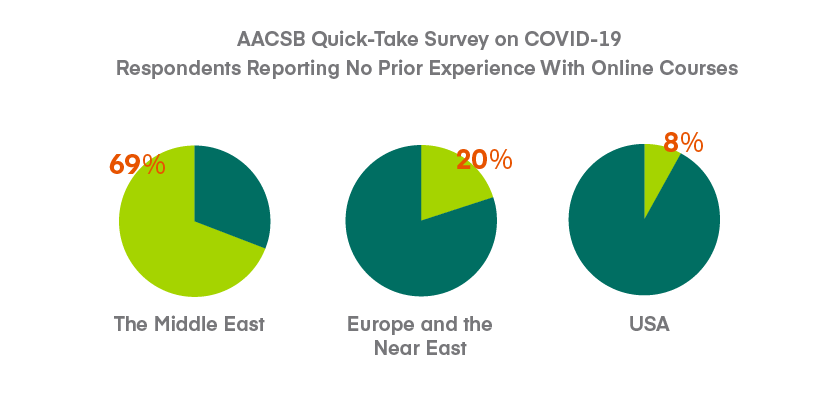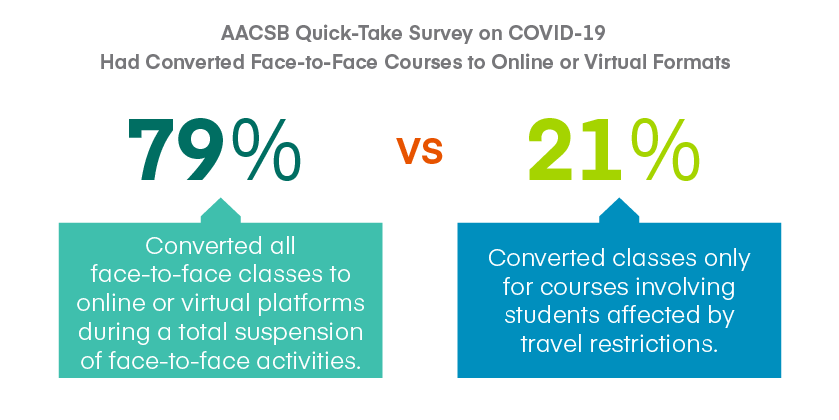AACSB Quick-Take Survey on COVID-19: Online/Virtual Instruction Findings
With the COVID-19 outbreak, technology has served as a major driver for various industries to maintain operations. Within higher education, universities around the world are converting to online and virtual instruction, as we learned from AACSB’s quick-take survey on COVID-19 earlier this month.
We asked respondents to share how they were leveraging technology in their course and program instruction. We learned that 51 percent of respondents had converted face-to-face courses to online or virtual formats, but with some significant regional differences. Respondents in Oceania and the Middle East showed the highest conversion to online and virtual formats, at 86 percent and 84 percent respectively. At the time of the survey, respondents in Canada, Africa, and the United States showed the lowest conversion to online and virtual formats, at 33 percent, 43 percent, and 44 percent respectively.

Respondents in the Middle East reported at the highest proportion for having no prior experience with online courses or programs, at 69 percent, compared to 20 percent of respondents in Europe and the Near East and 8 percent of respondents in the United States.

Further, we saw differences in the types of classes that were converted to online or virtual formats. Of those reporting overall, 79 percent of schools converted all face-to-face classes to online or virtual platforms during a total suspension of face-to-face activities (i.e., for all students) compared to 21 percent who converted classes only for courses involving students affected by travel restrictions. Some regional differences appear. For instance, within the United States, 95 percent of respondents had converted classes for all students, while in Oceania, the majority—at 58 percent—reported converting classes only for students affected by travel restrictions.

Some respondents shared their perspectives on the impacts of converting classes online, ranging from optimistic to frustrated:
Created urgency to move all courses online. Has forced us to address issues that we should have addressed all along such as IT and distance ed support.
We are trying to switch to online teaching within a few days. Very challenging. The university made the decision [with just 24 hours’ notice].
Unprecedented but an opportunity to speed up new online programs and train faculty; morale issues; prep[aration] for crisis is imp[ortan]t so [it] tests our readiness.
Many respondents noted that, although the sudden move to online instruction has occurred under bad circumstances, it has forced faculty and administrators to think quickly and innovatively about how to continue learning for students, specifically through online platforms. Whether these impacts will be long-lasting and widespread is yet to be seen.





